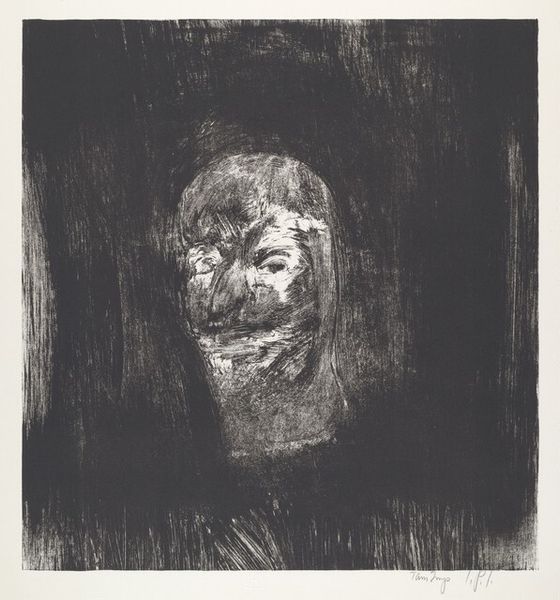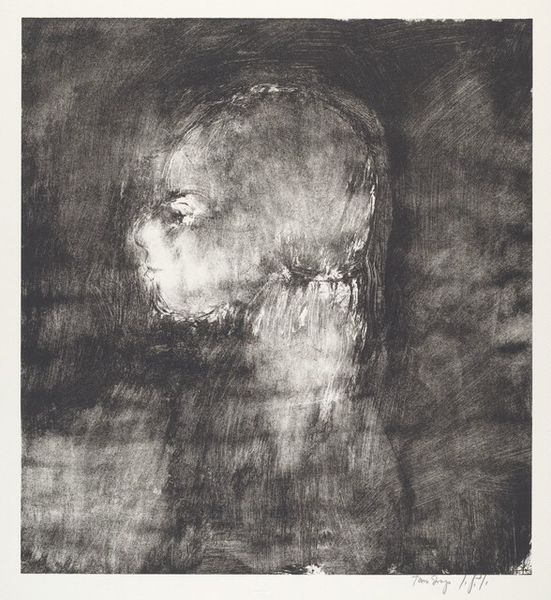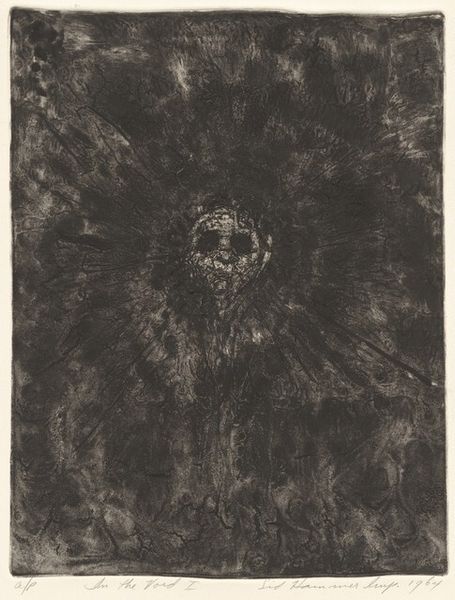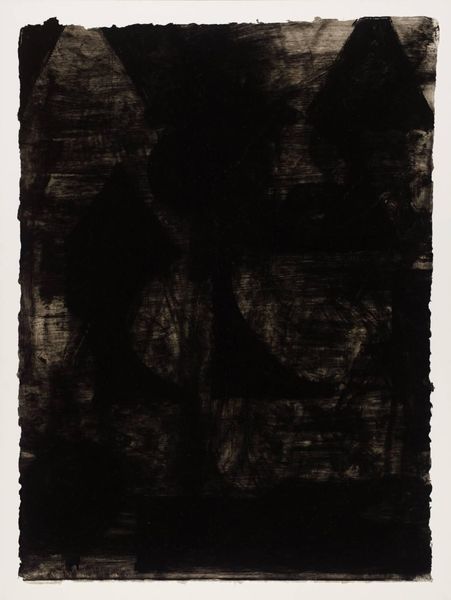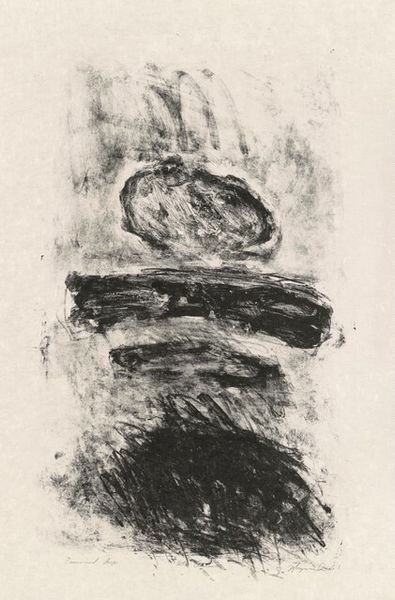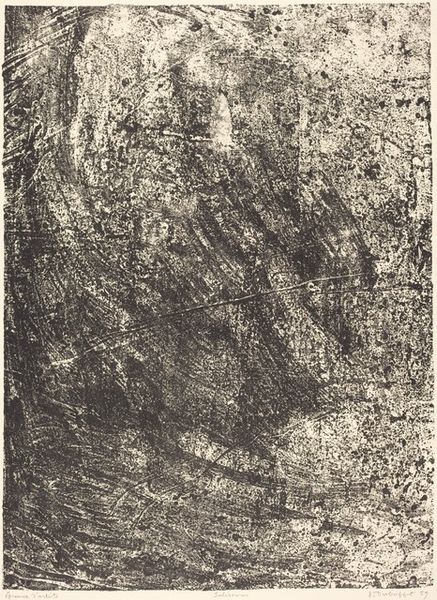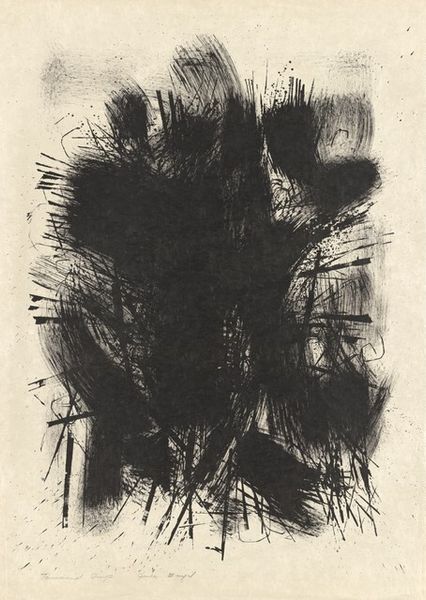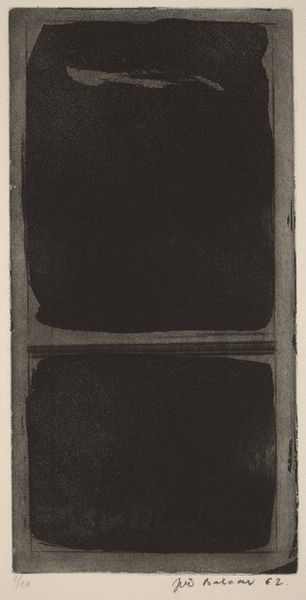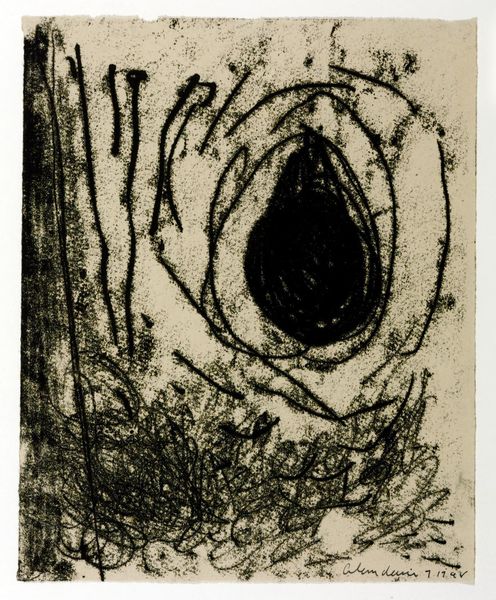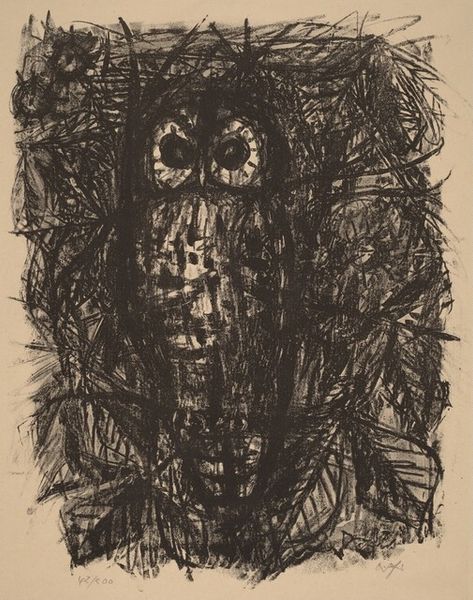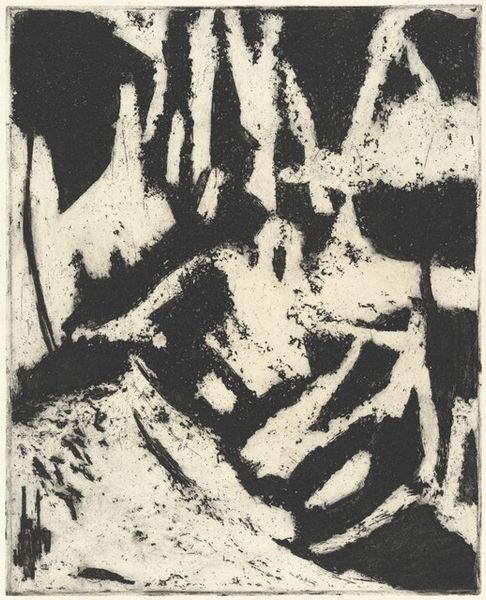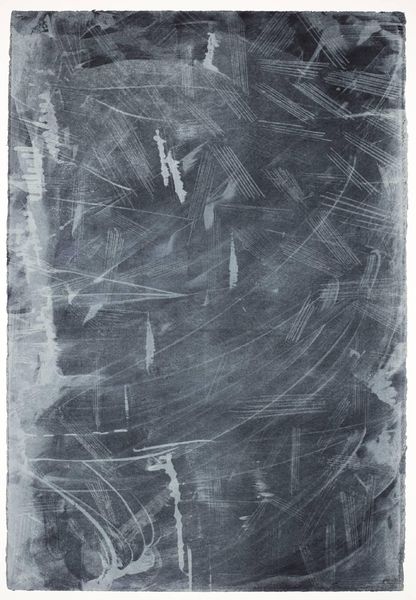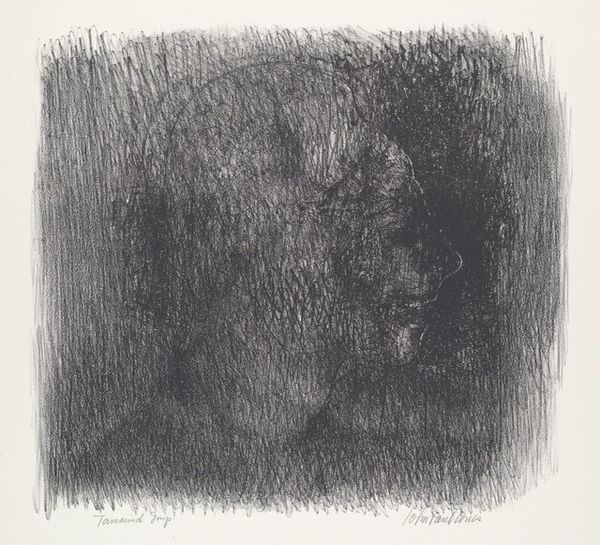
graphic-art, print, intaglio
#
portrait
#
graphic-art
# print
#
intaglio
#
figuration
#
momento-mori
#
abstraction
#
monochrome
Dimensions: plate: 20 × 16.5 cm (7 7/8 × 6 1/2 in.) sheet: 75.88 × 55.88 cm (29 7/8 × 22 in.)
Copyright: National Gallery of Art: CC0 1.0
Curator: Here we have Sid Hammer’s intaglio print, "In the Void II," created in 1964. What’s your initial reaction? Editor: Stark. Ominous. The skull form emerges from what seems like an oppressive darkness. Curator: As a printmaker working with intaglio, Hammer would have had to laboriously etch into a metal plate, wiping ink into the grooves and then applying immense pressure to transfer the image to paper. The density of the black speaks to significant material investment. Editor: The darkness certainly commands the eye, and the rough texture contributes to a sense of unease. Compositionally, the skull, placed almost dead center, forces a direct confrontation. The subtle gradations in tone help define the cranium’s structure. Curator: Consider too, the sociopolitical context. 1964 was a time of Cold War anxieties. “In the Void II” might reflect a widespread cultural fascination with mortality. This print, made in multiples, was potentially disseminated broadly, offering a portable symbol of these anxieties to a wider audience. Editor: Perhaps. But I see it also within the formal language of abstraction. The dissolution of the form, its edges blurring into the 'void,' transcends pure representation. Note how the monochrome palette reduces everything to essential light and shadow. Curator: That very dissolution though suggests something about the anxieties related to labor during times of geopolitical turmoil, not just individual memento mori, wouldn't you agree? Editor: An interesting point. I remain struck, nonetheless, by how successfully Hammer uses the most basic elements—value and form—to evoke profound emotion. It stands as a potent example of visual economy. Curator: It really showcases how intaglio as a medium and print production helped influence consumption, and it challenges assumptions related to death in modernity by materializing it and putting a price tag on this anxiety through purchase and exchange. Editor: I can appreciate the material investment necessary to produce "In the Void II"; nonetheless, this deep dive allows one to reflect on how Hammer employed fundamental techniques and concepts of abstraction to achieve visual tension.
Comments
No comments
Be the first to comment and join the conversation on the ultimate creative platform.
